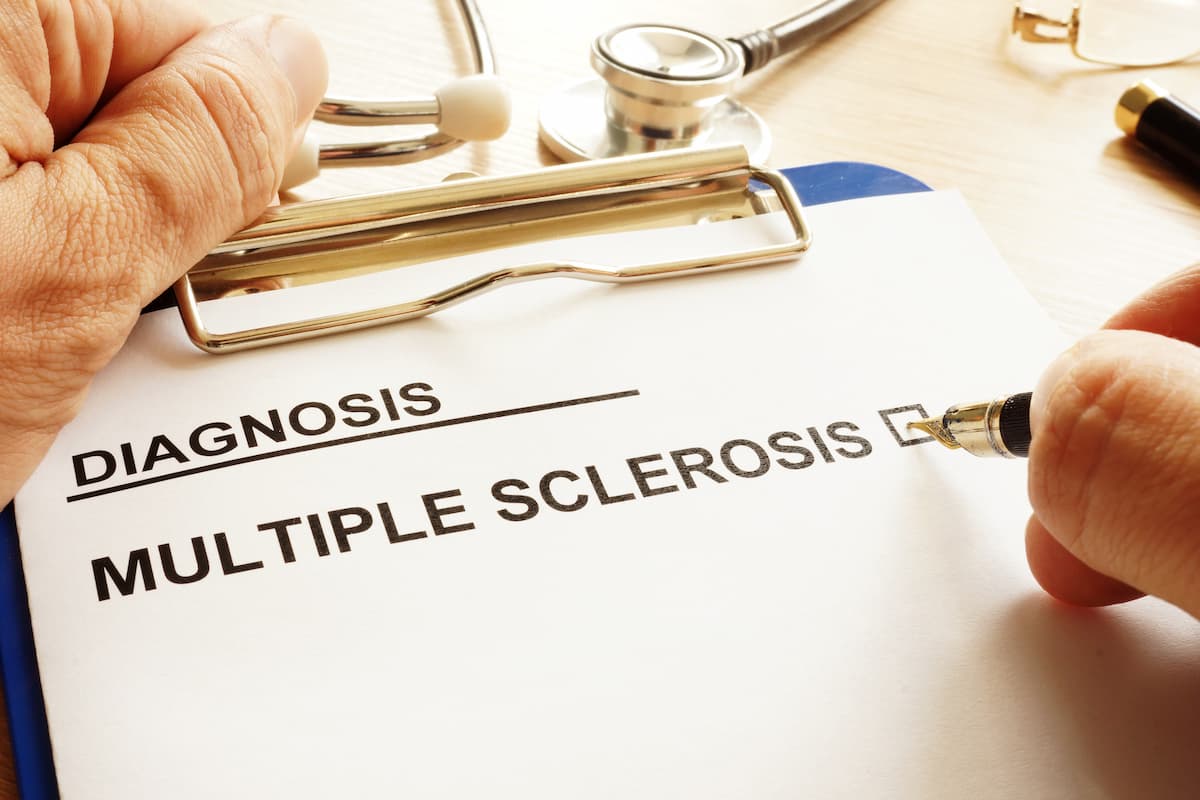Article
Atypical Radiological, Lab Findings Linked to Choice of Therapy in Patients With MS
Author(s):
Choice of therapy to manage multiple sclerosis (MS) and prevent relapse was found to influence radiological and laboratory results, including lesion presentation, giving insight into the paraclinical characteristics of patients receiving different MS therapies.
Radiological and serological findings that are atypical of multiple sclerosis (MS) were observed more frequently in patients with MS treated with immunosuppressive (IS) drugs or corticosteroids (CS) than disease-modifying drugs (DMDs), according to a recent analysis of Japanese patients.
The multicenter retrospective study, published in Frontiers in Neurology, found that the absence of contrast-enhancing lesions commonly found in MS and positivity for serum autoantibodies were independent factors significantly associated with use of CS and IS drugs.
“Further prospective clinical study with an appropriate design is needed to clarify the therapeutic efficacy of CS/IS in MS patients with radiological and serological features atypical of MS,” wrote the investigators.
A differential diagnosis of MS involves multiple diseases, including neuromyelitis optica spectrum disorder (NMOSD). Differentiation between MS and NMOSD is important for patient management because patients respond differently to treatment and some patients with NMOSD do not benefit from DMDs.
Despite having a clinical phenotype associated with NMOSD, some patients remain seronegative, which can make differential diagnoses particularly difficult among patients who are clinically borderline between MS and NMOSD. Typically, immunosuppression is recommended as first-line treatment for most patients with MS and NMOSD overlap and some patients with MS, suggesting that IS drugs are prescribed as part of MS therapy. However, more studies assessing paraclinical characteristics of patients receiving IS therapy are needed to clarify important clinical factors related to CS and/or IS use.
The investigators collected data on 125 consecutive patients with relapsing inflammatory diseases of the central nervous system receiving relapse-preventive therapy who presented at 3 MS-referral hospitals in the Kansai region of Japan between October 2016 and March 2017, of whom 92 were included in the final analysis.
Among those included, 66 (72%) patients were tested for anti-AQP4 antibodies and 6 (6.5%) were tested for anti-MOG antibodies, all of whom were seronegative. Also, 67 (73%) patients were female, the mean (SD) age at enrollment was 44.7 (10.9) years, and the mean treatment duration was 7.2 (4.3) years. In total, 67 (73%) patients were receiving DMDs and 25 (27%) were receiving a CS or an IS drug.
Visual disturbance was the most common first clinical manifestation and was more frequent among patients receiving a CS or IS drug compared with patients who were administered DMDs (64% vs 42%; P = .04).
Lesion distribution was assessed using MRI, and the involvement of the subcortical brain region (42% vs 16%; P = .02), the cerebellum (16% vs 0%; P = .03), and the spinal cord (66% vs 36%; P = .01) was significantly more frequent in patients treated with DMDs than with CS or IS drugs, respectively. Contrast-enhancing lesions were significantly more common among patients treated with DMDs than with CS or IS drugs (73% vs 28%; P < .001). Similarly, the rates of lesions with nodular and/or open-ring or ring enhancement patterns were higher among patients treated with DMDs (98% vs 43%; P = .0005).
When comparing laboratory findings, the investigators found that 6 of the 25 patients treated with a CS or IS drugs were seropositive for autoantibodies compared with 2 of the 67 patients treated with DMDs.
Results from the multiple logistic regression analysis showed that the absence of nodular and/or open-ring or ring enhancement lesions (odds ratio [OR], 25.027; P = .02) and positivity for serum autoantibodies (OR, 14.537; P = .01) were independent factors associated with CS and IS drug therapy.
The main study limitations were the small sample size and that the retrospective design meant that anti- QP4 and anti-MOG antibodies were not measured in the 94 patients identified.
Reference
Ashida S, Ochi Hm Hamatani M, et al. Radiological and laboratory features of multiple sclerosis patients with immunosuppressive therapy: A multicenter retrospective study in Japan. Front Neurol. Published online October 13, 2021. doi:10.3389/fneur.2021.749406





